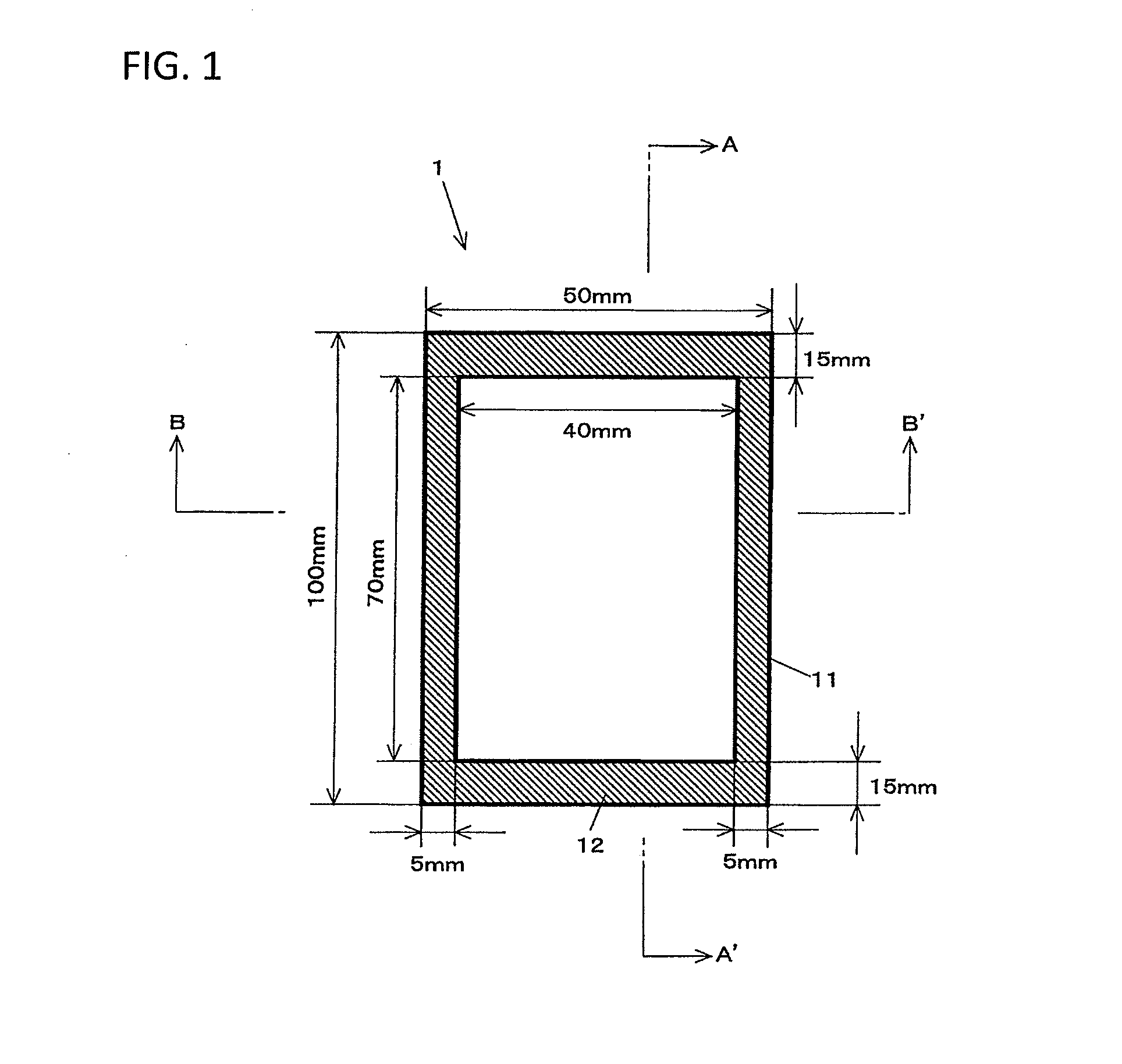Acrylic pressure-sensitive adhesive tape
a technology of adhesive tape and adhesive adhesive, which is applied in the direction of adhesives, film/foil adhesives, adhesive types, etc., can solve the problems of adhesive reliability not being obtainable, etc., and achieve excellent anti-foaming release properties, excellent step followability, excellent adhesive properties
- Summary
- Abstract
- Description
- Claims
- Application Information
AI Technical Summary
Benefits of technology
Problems solved by technology
Method used
Image
Examples
example 1
[0164]A monomer mixture composed of 68 parts by weight of 2-ethylhexyl acrylate (2EHA), 14.5 parts by weight of N-vinyl-2-pyrrolidone (NVP), and 17.5 parts by weight of 2-hydroxyethyl acrylate (HEA) was blended with 0.035 parts by weight of a photopolymerization initiator (trade name: “IRGACURE 184”, manufactured by BASF SE) and 0.035 parts by weight of a photopolymerization initiator (trade name: “IRGACURE 651”, manufactured by BASF SE). Thereafter, the mixture was irradiated with ultraviolet rays until the viscosity (using a BH viscometer equipped with a No. 5 rotor at 10 rpm and a measuring temperature of 30° C.) reached about 20 Pa·s, thereby obtaining a prepolymer composition in which a part of the foregoing monomer components had been polymerized.
[0165]Subsequently, to the thus obtained prepolymer composition, 5 parts by weight of the foregoing Acrylic Polymer (B-1), 0.150 parts by weight of hexanediol diacrylate (HDDA), and 0.3 parts by weight of a silane coupling agent (trad...
example 2
[0168]A prepolymer composition was obtained in the same manner as that in Example 1.
[0169]Subsequently, an acrylic pressure-sensitive adhesive composition was obtained from the thus obtained prepolymer composition in the same manner as that in Example 1, except for changing the addition amount of the hexanediol diacrylate (HDDA) to 0.100 parts by weight.
[0170]Then, a substrateless double-sided pressure-sensitive adhesive tape was obtained in the same manner as that in Example 1, except for using the thus obtained acrylic pressure-sensitive adhesive composition.
example 3
[0171]A prepolymer composition was obtained in the same manner as that in Example 1.
[0172]Subsequently, an acrylic pressure-sensitive adhesive composition was obtained from the thus obtained prepolymer composition in the same manner as that in Example 1, except for changing the addition amount of the hexanediol diacrylate (HDDA) to 0.075 parts by weight.
[0173]Then, a substrateless double-sided pressure-sensitive adhesive tape was obtained in the same manner as that in Example 1, except for using the thus obtained acrylic pressure-sensitive adhesive composition.
PUM
| Property | Measurement | Unit |
|---|---|---|
| RH | aaaaa | aaaaa |
| tensile speed | aaaaa | aaaaa |
| total thickness | aaaaa | aaaaa |
Abstract
Description
Claims
Application Information
 Login to View More
Login to View More - R&D
- Intellectual Property
- Life Sciences
- Materials
- Tech Scout
- Unparalleled Data Quality
- Higher Quality Content
- 60% Fewer Hallucinations
Browse by: Latest US Patents, China's latest patents, Technical Efficacy Thesaurus, Application Domain, Technology Topic, Popular Technical Reports.
© 2025 PatSnap. All rights reserved.Legal|Privacy policy|Modern Slavery Act Transparency Statement|Sitemap|About US| Contact US: help@patsnap.com



